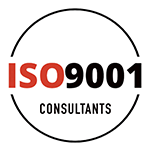Organisations today face an increasingly complex business landscape, with multiple regulatory requirements, shifting stakeholder expectations, and the need to maintain a competitive edge. To navigate this environment, businesses must adopt a comprehensive and integrated approach to managing their processes and systems. One of the most effective ways to achieve this is by implementing an Integrated Management System (IMS) that combines the power of ISO 9001 (Quality Management), ISO 14001 (Environmental Management), and ISO 45001 (Occupational Health and Safety Management) standards.
Fusing these three internationally recognised management standards into a single, unified framework enables organisations to reap the benefits of each individual standard while streamlining resources, simplifying communications, and reducing duplication of efforts. As a result, an IMS serves as an invaluable tool for driving business excellence, fostering continuous improvement, and ensuring a robust approach to managing quality, environmental, and health and safety risks.
Key benefits of implementing an Integrated Management System in your organisation include:
- Streamlined Management Processes: An IMS brings operational efficiency by consolidating management processes and reducing redundancies, consequently minimising bureaucracy and making it easier to maintain and improve your systems.
- Holistic Risk Management: By integrating ISO 9001, ISO 14001, and ISO 45001 standards, your organisation can comprehensively manage quality, environmental, and occupational health and safety risks, contributing to the overall resilience and sustainability of your business.
- Enhanced Reputation and Stakeholder Trust: An IMS demonstrates your organisation’s commitment to excellence across multiple operational areas, strengthening your reputation and fostering trust among stakeholders, including customers, suppliers, employees, and regulators.
- Cost Savings: By combining management systems, your organisation can reduce auditing and certification expenses, while also benefiting from improved resource efficiency resulting from streamlined processes.
Our skilled team of ISO consultants is ready to guide your organisation on its journey to implement a robust and effective Integrated Management System tailored to your unique business needs. Drive your organisation toward business excellence with a comprehensive and integrated approach to quality, environmental, and occupational health and safety management.
Mastering Integrated Management Systems: Drive Business Excellence Combining ISO 9001, ISO 14001, and ISO 45001 Standards
The Building Blocks of an Integrated Management System
The cornerstone of a successful Integrated Management System (IMS) is a strategic blend of three ISO standards, each with a distinct focus and contribution towards achieving business excellence:
- ISO 9001 – Quality Management: This internationally recognised standard provides a framework for establishing and maintaining a Quality Management System (QMS), enabling organisations to deliver consistent and reliable products and services, enhance customer satisfaction, and continually improve operational performance.
- ISO 14001 – Environmental Management: This standard outlines requirements for implementing an Environmental Management System (EMS), helping organisations to manage their environmental impacts, demonstrate a commitment to sustainable practices and comply with legal and regulatory requirements.
- ISO 45001 – Occupational Health and Safety Management: Promoting a safe and healthy working environment, this standard specifies criteria for an Occupational Health and Safety Management System (OHSMS) that helps organisations proactively identify, prevent, and manage occupational health and safety risks.
Implementing an Integrated Management System: A Step-by-Step Guide
To successfully integrate ISO 9001, ISO 14001, and ISO 45001 standards into a cohesive IMS, organisations can follow these key steps:
- Assess Existing Systems: Perform a gap analysis to evaluate your current management systems, identify any areas of overlap or duplication, and pinpoint areas where integration can be achieved.
- Develop a Unified Policy: Establish a single, overarching policy that outlines your organisation’s commitment to quality, environmental responsibility, and occupational health and safety, followed by relevant objectives and targets to guide the implementation of your IMS.
- Align Processes and Procedures: Consolidate and streamline processes, documentation, and procedures across your management systems, reducing redundancies, and enhancing efficiency.
- Train and Engage Staff: Educate your workforce about the integrated approach, ensuring that all personnel comprehend their roles and responsibilities within the IMS and are committed to its success.
- Implement the IMS: Communicate the unified policy, processes, and procedures across your organisation, engaging all staff in the implementation process and monitoring progress.
- Review and Continuously Improve: Regularly evaluate the effectiveness of your IMS and introduce changes as necessary to drive ongoing performance improvements and ensure compliance with each standard’s requirements.
Benefits and Synergies of Integrated Management Systems
Organisations that successfully implement an Integrated Management System can realise a wealth of benefits:
- Streamlined Processes and Operational Efficiency: Combining management systems reduces redundancies, creating a more efficient and simplified management structure that supports continuous improvement and waste reduction.
- Enhanced Risk Management: By adopting a holistic and integrated approach to managing risks across quality, environmental, and occupational health and safety dimensions, your organisation can improve resilience and sustainability.
- Cost Savings: An IMS can lead to financial savings through reduced auditing and certification costs, as well as improved resource efficiency resulting from streamlined processes.
- Stronger Reputation and Stakeholder Trust: Demonstrating a proactive and comprehensive approach to managing multiple aspects of your organisation’s performance will enhance your reputation and foster trust among customers, suppliers, and other stakeholders.
- Simplified Compliance: An IMS ensures that your organisation remains up-to-date with evolving regulatory requirements, minimising potential compliance issues, and associated penalties.
Realising Success with Integrated Management Systems
To achieve the full potential of an IMS, organisations should consider several key success factors:
- Executive Buy-In: Obtaining support from top-level management is crucial for driving the integration process, ensuring the commitment of necessary resources and fostering a culture of continuous improvement.
- Effective Communication: Clearly communicating the benefits and expectations of your IMS to the entire workforce is essential for fostering a sense of ownership, accountability, and engagement.
- Collaboration Across Functions: Promoting cross-functional collaboration and breaking down organisational silos can accelerate the integration process and create a more coherent and supportive culture.
Master Integrated Management Systems and Propel Your Organisation Forward
An Integrated Management System offers a powerful and unified approach to realising business excellence by combining the strengths of ISO 14001, ISO 45001, and ISO 9001 standards. Partner with our skilled team of experts on your journey to implement, certify, and maintain a robust IMS tailored to your organisation’s unique needs and objectives, and unlock your full potential for quality, environmental, and occupational health and safety management.








Users Comments
Get a
Quote